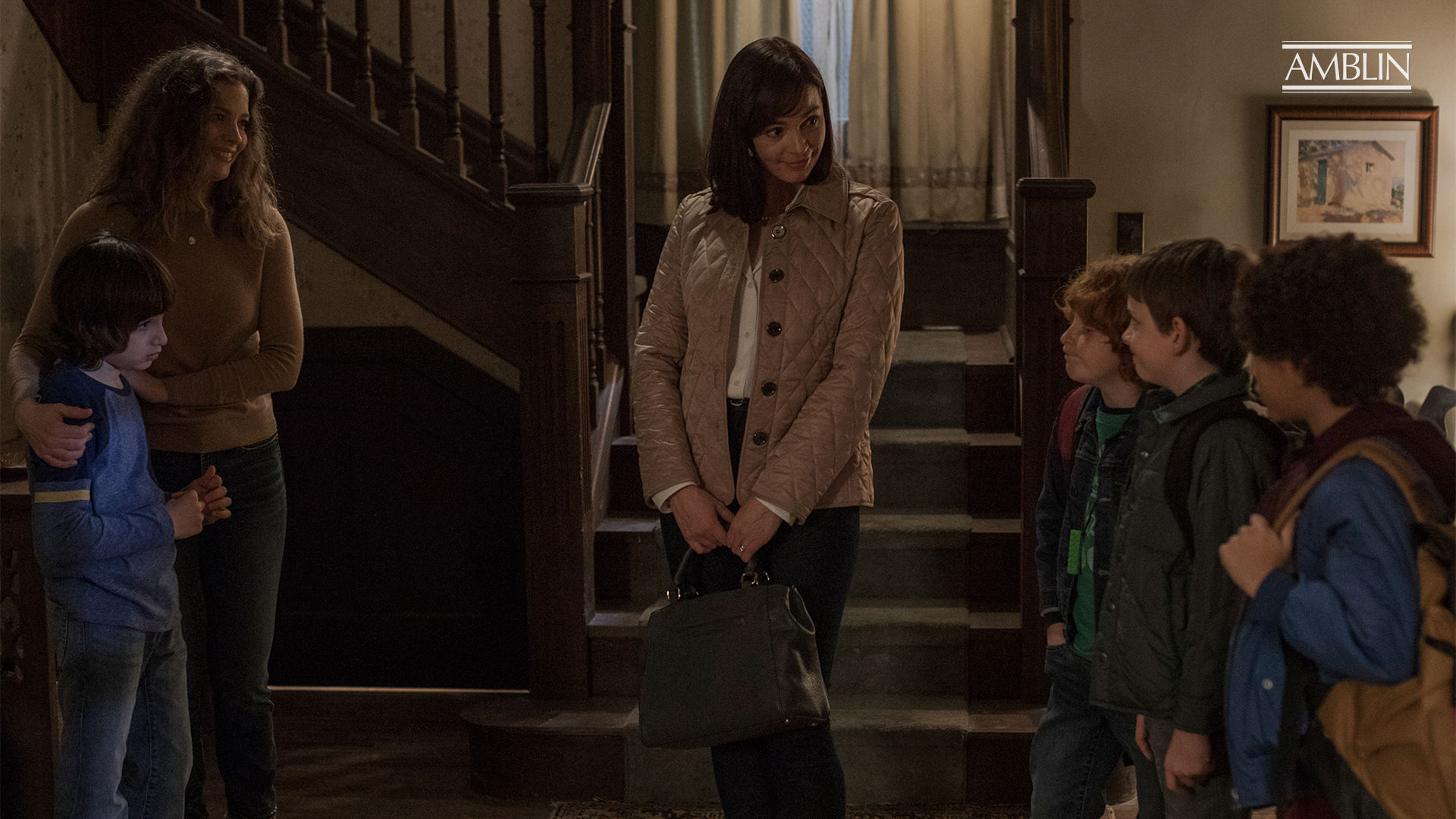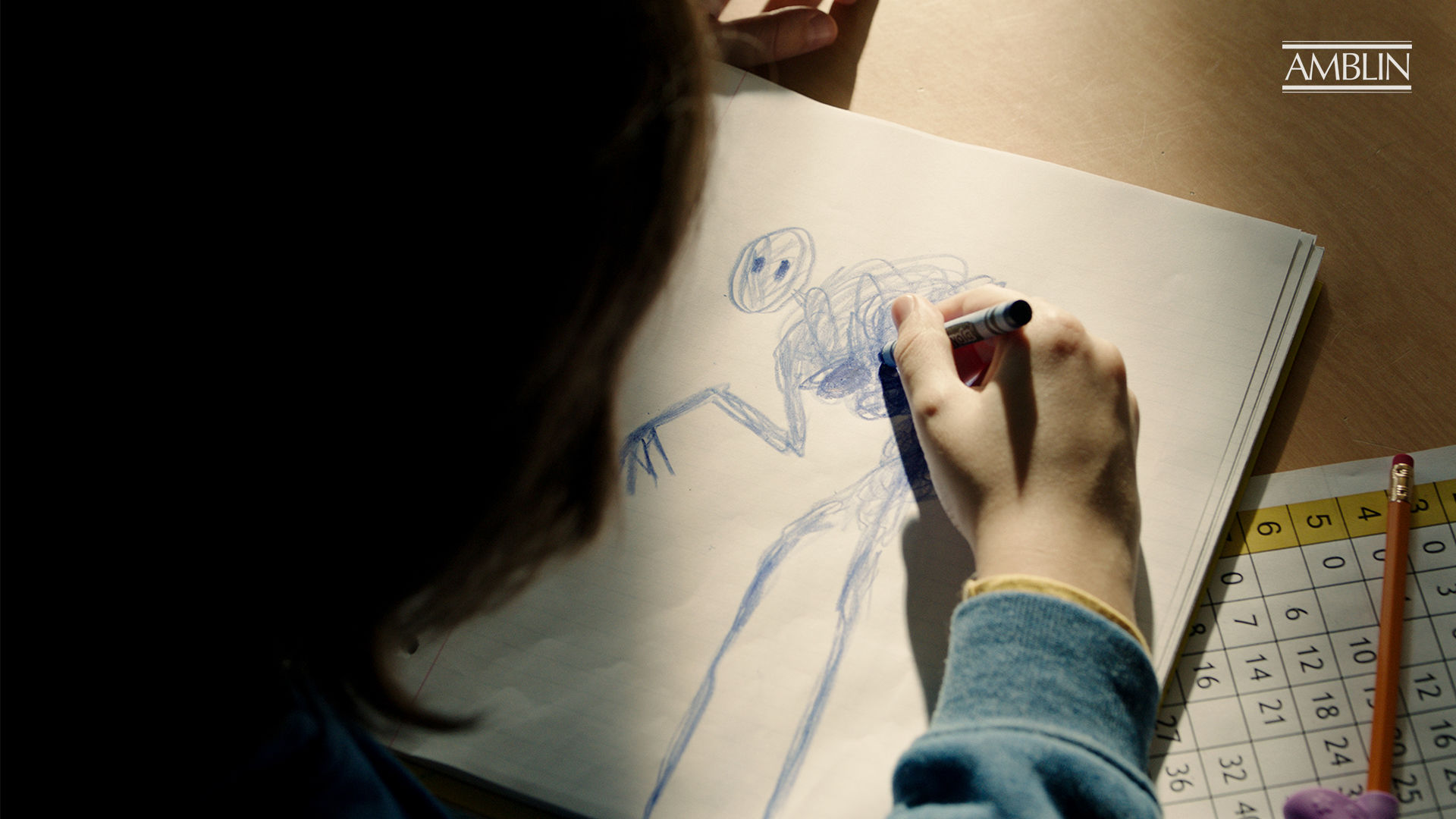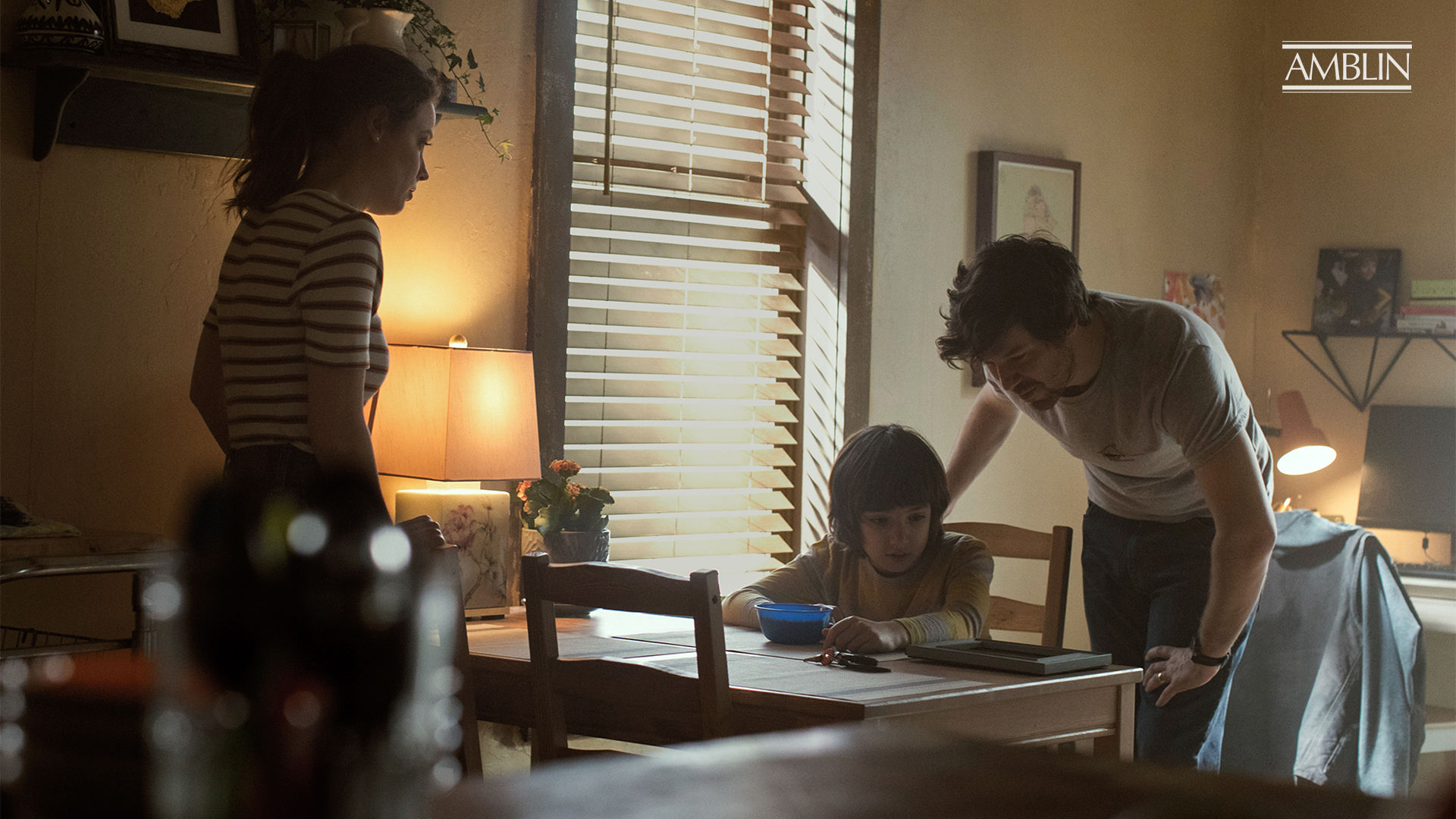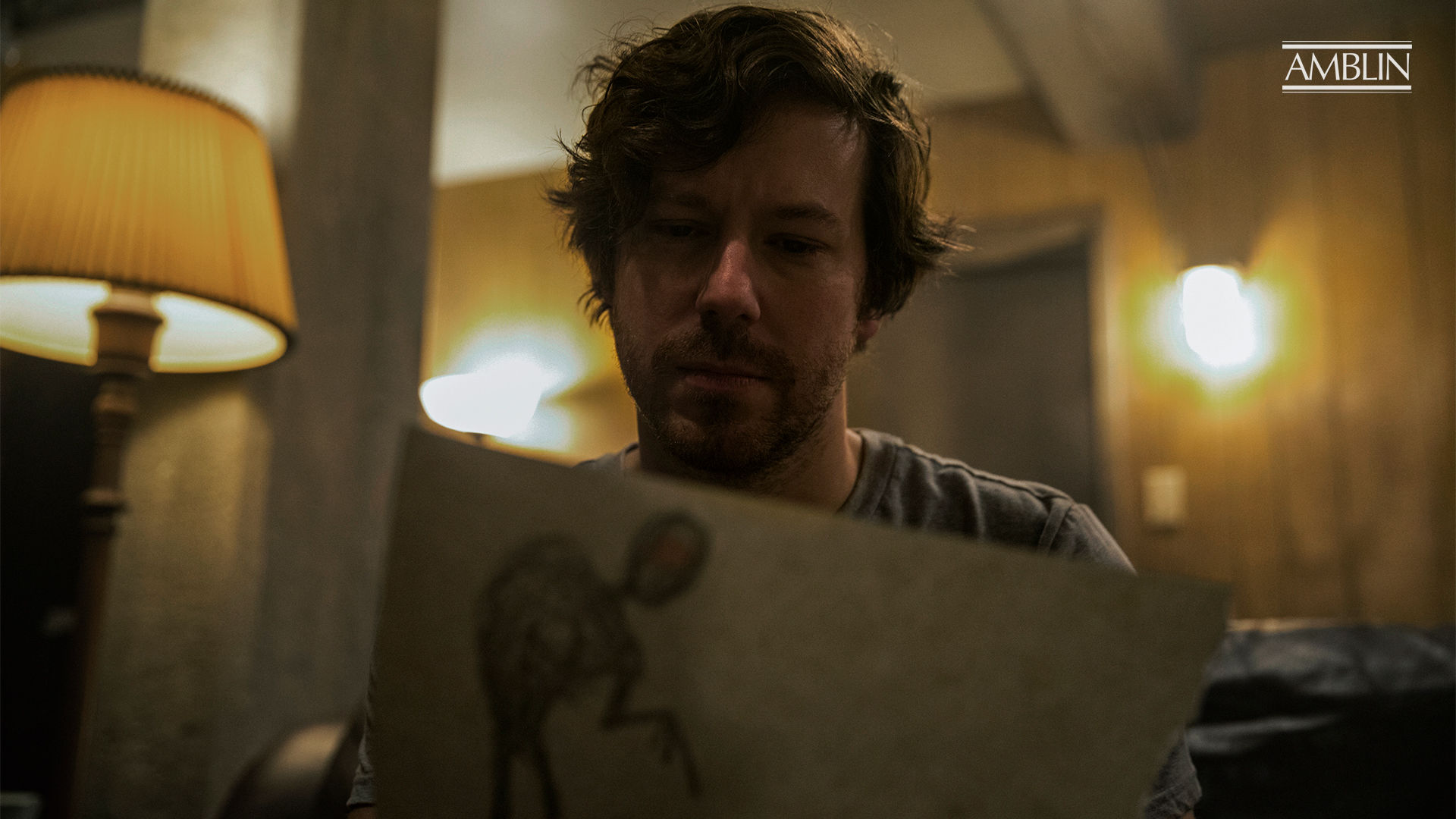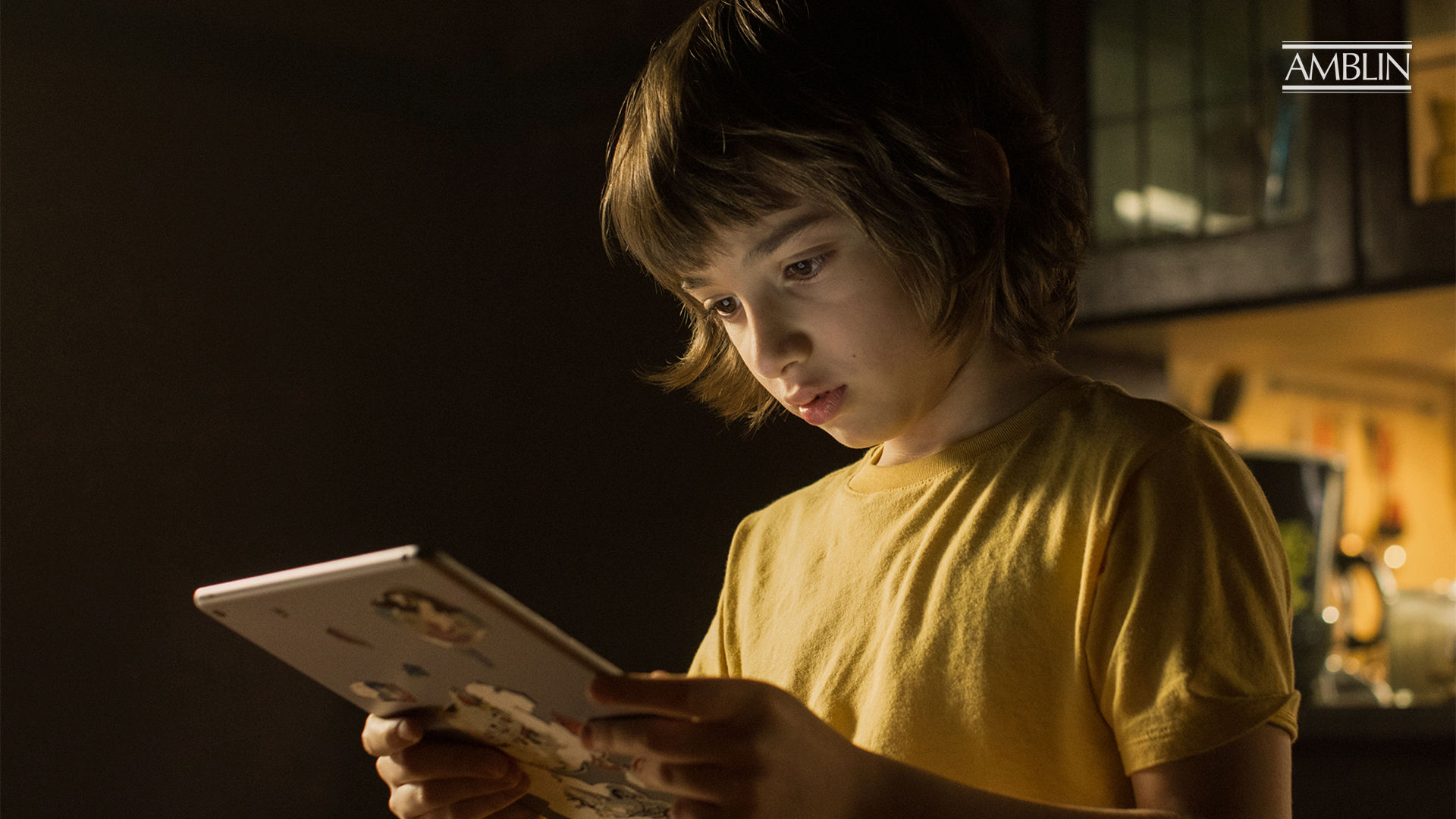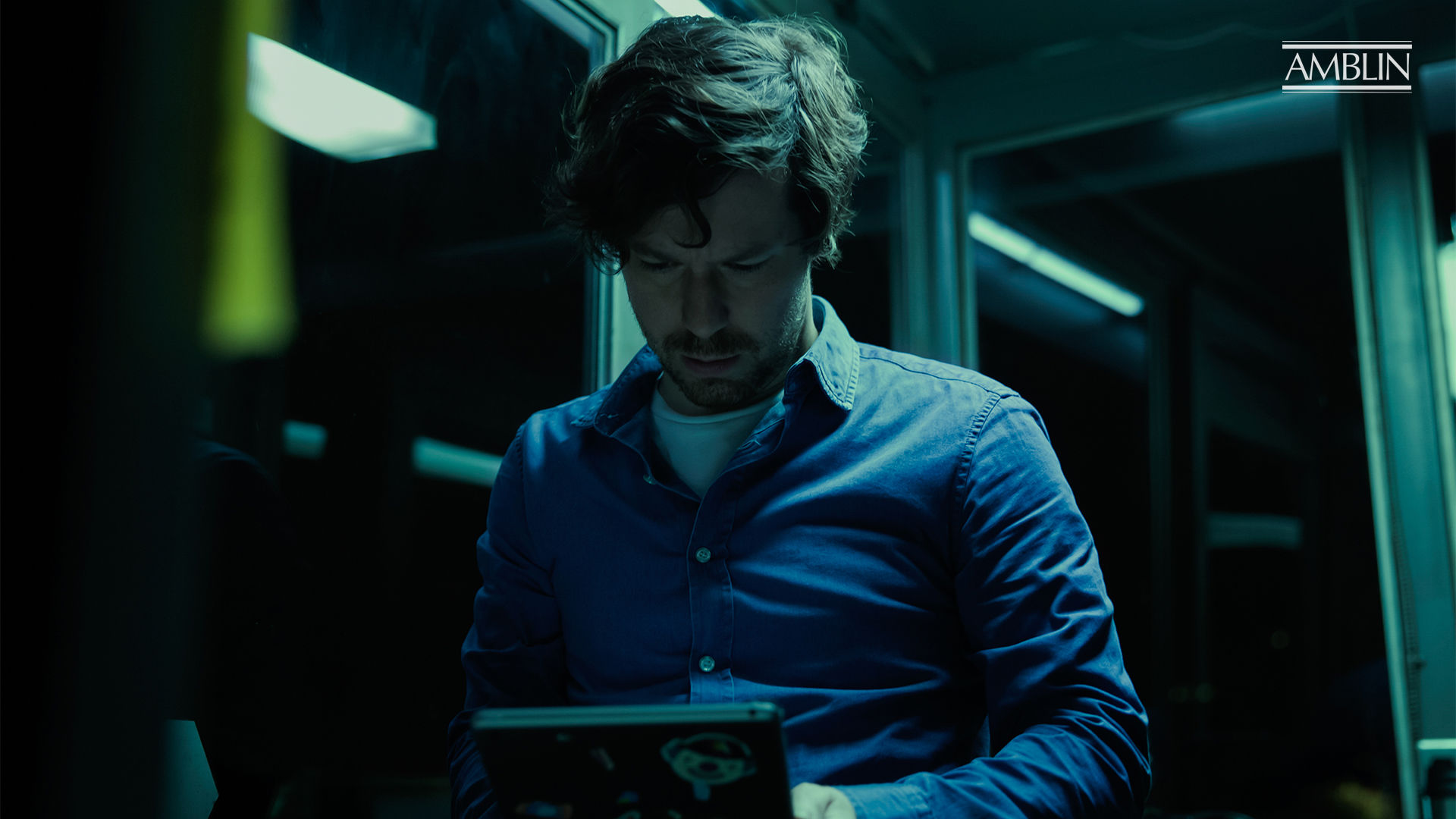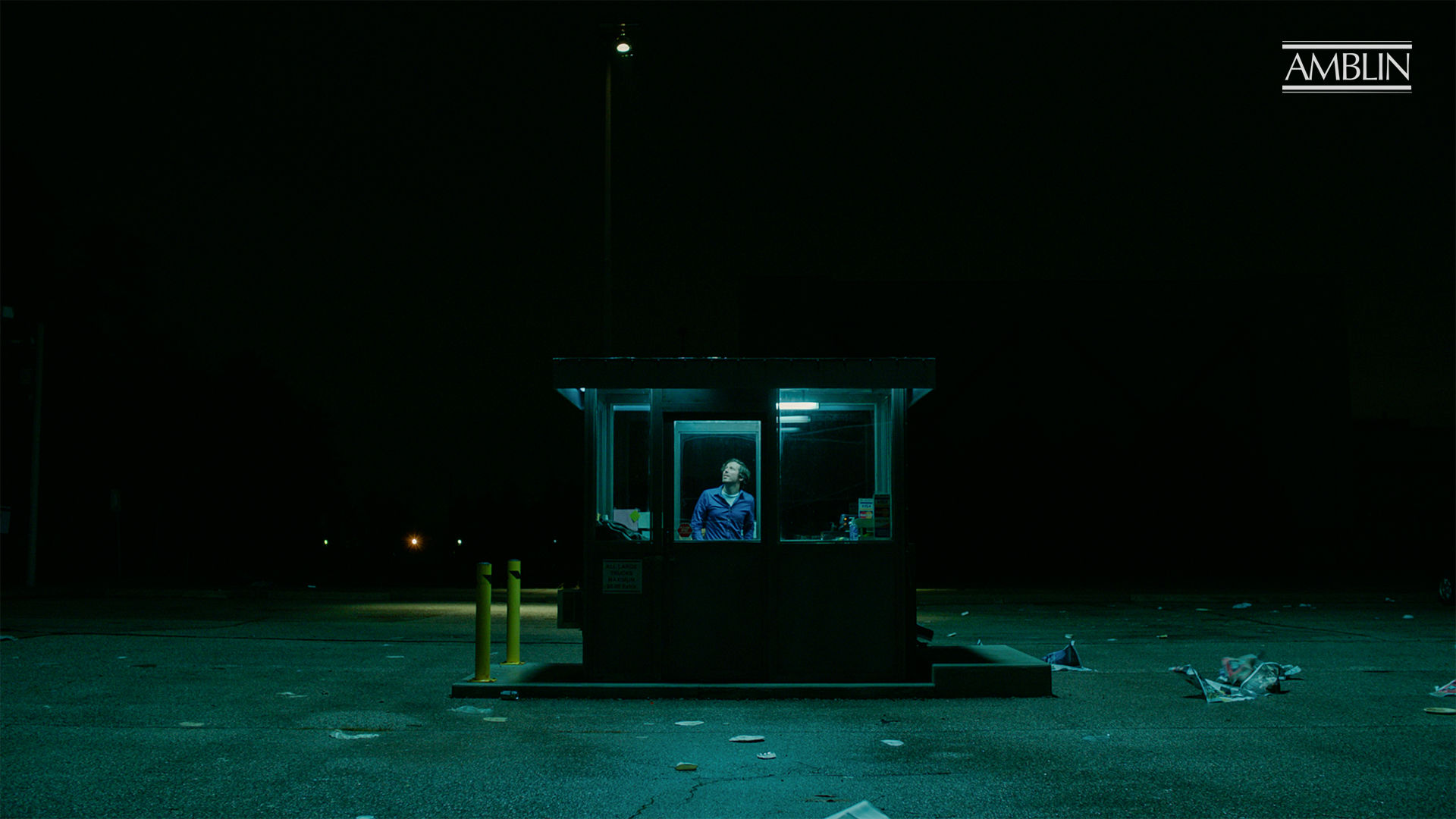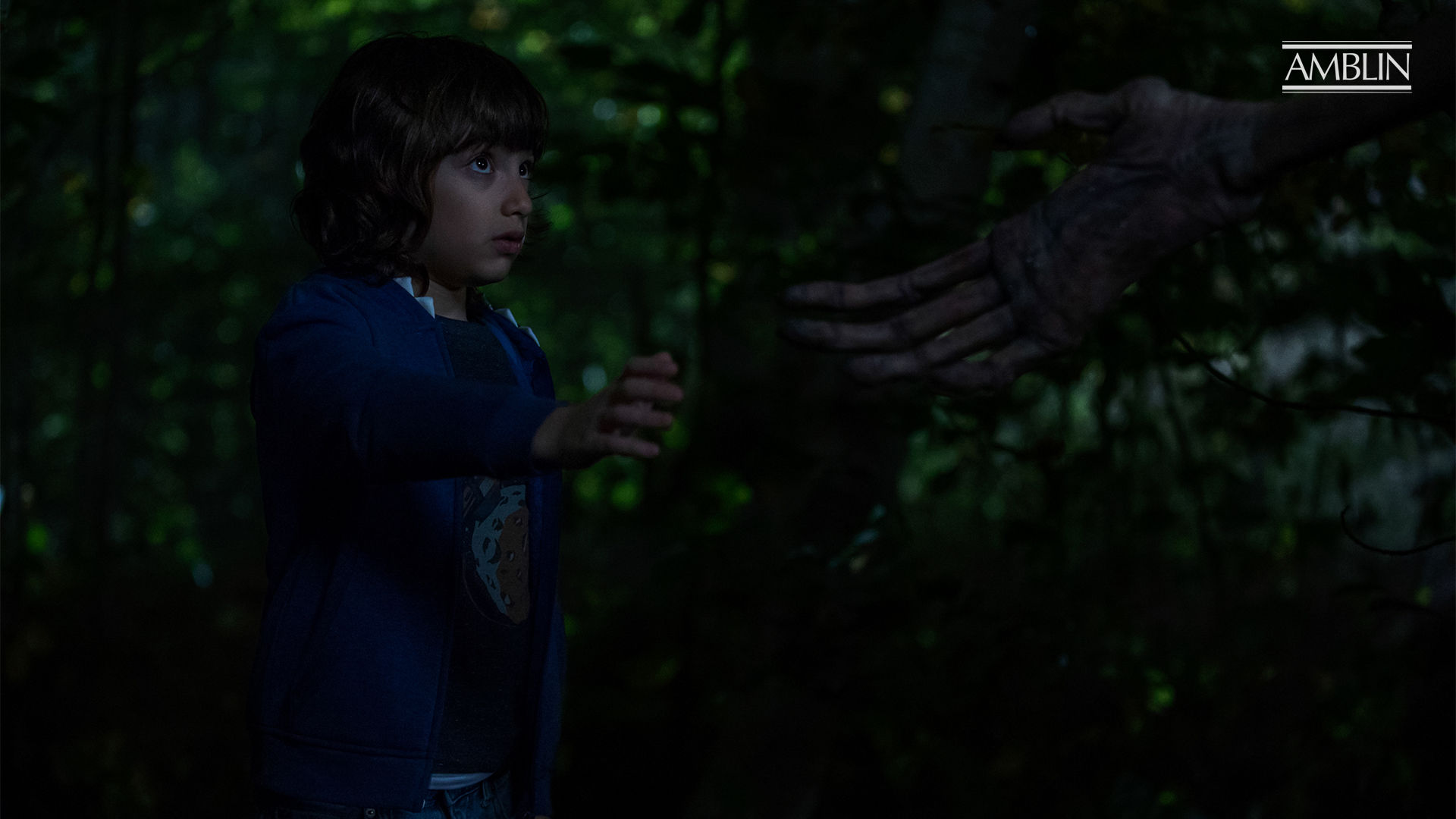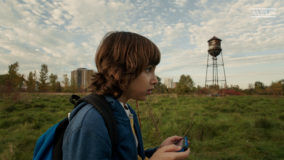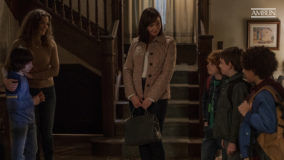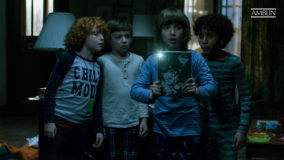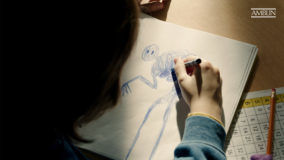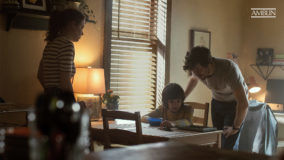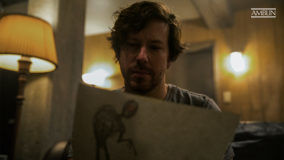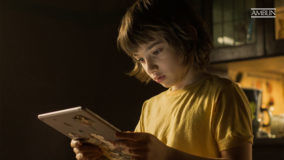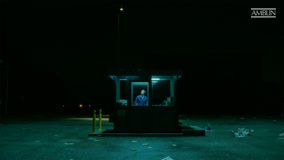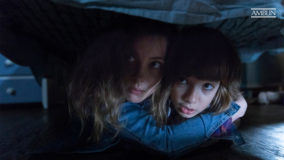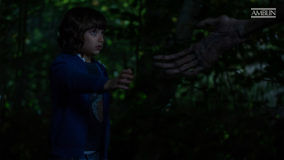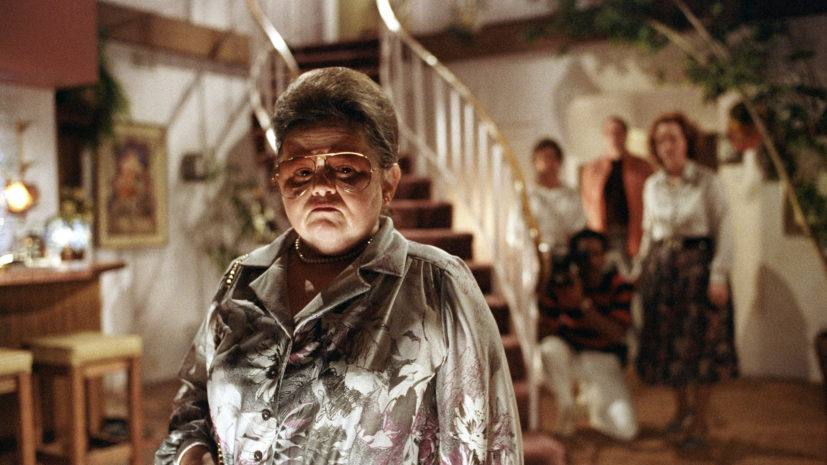AMBLIN: Come Play is your studio feature debut. What led you to this point in your life and career?
CHASE: That's a big question. I'd been making haunted houses for many years. It started when I was a young kid in high school and off and on, I did it up until my mid-20’s with a whole new group of friends. It was an amazing experience. I learned how to scare people and I learned this unique form of live storytelling. While I was doing that, I was simultaneously trying to make a career in filmmaking and with the ambition to always direct. I started writing scripts and I started editing movies and all this stuff led to me making short films. Eventually one of the short films I made was Larry, which I made because I had a costume from my old haunted house sitting around, this big stilts skinny man that I had made, and I was like, "Hey, I'll put him in a short film." I made Larry with a bunch of my friends and luckily people really loved the short film. When Amblin was one of the companies that was interested in making it, there was really no other choice for me because the reason I want to make movies is Steven Spielberg's movies when I was growing up. The opportunity to make a film at Amblin was—I can't say it enough—how much of a dream come true it was.
AMBLIN: Take us through the process of having made the short film, Larry, which caught Amblin's attention and what it was like to adapt it into a feature-length tale.
CHASE: The short film Larry is quite a bit simpler than the feature, of course. The thing that carries through the most is this monster named Larry and the fact that he wants to have friends. Really when I was expanding it to become a feature, what I was trying to ask myself was like, "Who is the most interesting person for this monster to come into contact with?” I knew it was going to be a monster who communicates through our devices. Separately, I had long been interested in telling a story about a young boy on the autism spectrum because my wife works with kids on the spectrum and so I've met so many of those kids over the years and really gotten to know that community in a way. It was a community that I felt wasn't represented very often in films. It became this perfect marriage of stories, this boy who I would create to be non-verbal and who needed his devices to communicate with the world, and then a monster that uses devices to communicate with our world. It was this perfect like, "Oh, that's the worst thing that could happen to this kid if his means of communication is taken away, but it also gives him a lot to try to conquer and overcome in the film with his parents." Just bringing those two ideas together ended up really creating this schematic whole of this movie about communication, and about loneliness. It kept going from there.
AMBLIN: Azhy Robertson, who plays Oliver, and Gillian Jacobs and John Gallagher Jr., who play Oliver’s mother Sarah and father Marty—what was it like working with them, especially on days where the story asks for particularly emotional work?
CHASE: We got so lucky with finding a group of people that felt like a family together. We could always just disappear into the work and into the characters. I think all three of the core cast had a challening time, but a very capable time of accessing their emotions. Certainly Gillian and John are old pros at this point, I could always trust them to just play the scenes real. With Azhy being a young kid, he's an amazing kid that's so in touch with his emotions. At the same time, it was finding the right access points, finding the right way to get him in the headspace of this character who is quite a bit different than Azhy is as a real person. A big thing for me was trying to create an environment that felt as real as possible so that they could just disappear into the scenes. For instance, one of the big reasons I wanted to make the Larry monster a practical puppet on set, was so that Azhy especially could interact with the monster in real life. He didn't have to picture a man in a greenscreen suit, he could actually see this big scary monster in front of him. So he could have all those real emotions of what it would be like to be scared of this person but at the same time, feel empathy for the monster and know what it means to feel lonely.
AMBLIN: Let's talk about Larry himself. Jim Henson’s Creature Shop produced and performed the puppet for you on the set?
CHASE: Yes, the Jim Henson Creature Shop created the puppet of Larry with some additional CG augmentation by our visual effects house, Mr. X. By and large, most of the shots in the film are the puppet, and that was just an amazing experience. I had worked with Henson a few times before as a writer, I've written a couple of movies for them. I had a good working relationship with them already, but I’ve also been such a huge fan. Labyrinth is one of my all-time favorite films. Walking through that creature shop is just like walking through my own nostalgia. When they were excited about this idea of creating a monster with me, I think it really landed something important to the film. Which is, it's a monster that's meant to be scary, but at the same time it had to be able to have a lot of emotion and heart in the face and in the way it moves. That whole team and the puppeteers are so good at creating a character through this movement. It brought some challenges on set, but at the same time, I wouldn't have done it any other way because it turned out so beautiful, and real, and just reminds me of the practical monsters that I saw on movies growing up.
AMBLIN: Speaking of nostalgia, are there any specific influences on Come Play so far as films you grew up with? Tones and feelings you were accessing when making Come Play from movies that made you as a filmmaker from your youth or even films from today?
CHASE: A lot of movies are inspiring, certainly in different ways. It's hard to pull to just one movie that inspired this, but there's elements of different films. Certainly, the movie I wanted to make was an Amblinesque movie, even before we got to sell to and make it with Amblin. The films that I was inspired by in relation to this were things like Poltergeist, a little bit of E.T. The Extra-Terrestrial—these films that are not afraid to scare kids and not afraid to be truly scary, but at the same time, they're not mean spirited. They have a lot of heart. There's no guile. It's ultimately filmmaking with a lot of compassion. One of my favorite things that Steven said to me when he first saw my movie was that this is a compassionate horror film. I thought that was so appropriate and such a good way to put it because that was the intention. I wanted to make a movie that was both scary and fun, while at the same time you end the film feeling a lot of hope and joy and happiness for this family.
AMBLIN: The horror genre truly is one of the most cinematic of all genres so far as strong, compelling images go. From the short film Larry, it was clear you had a very strong sense of visual style. For Come Play, you worked with an especially seasoned director of photography in Maxime Alexandre, who also recently shot episodes of The Haunting of Bly Manor for Amblin Television. How did you and Maxime conceive to bring Come Play to the screen with all its visual tones and tensions?
CHASE: Maxime and I worked really well together, I hope you would agree. I think as a younger or—I don't know how young I am anymore—but a newer filmmaker, I approached that relationship with a little trepidation at first, because he's so experienced and so amazing. As soon as we got in a room together, the first time, it was like, "Oh, this is just like making movies with my film school buddies." Maxime and I connected in such a great way. He brought so many visual ideas to the table. I am a big storyboarder and planner so I had a lot of ideas as well. What we really tried to do was put ourselves in Oliver's shoes a lot. We tried to focus on his isolation and loneliness, and how that mirrors Larry's loneliness and we tried to frame images and come up with shot designs that emphasize those emotions. Everything we talked about always came from an emotional place, first and foremost. Then at the same time we get to have a lot of fun with how we're creating horror set pieces in the movie. Oftentimes, we'd just get on the set and walk it together with a lens or with a storyboard artist, and we would talk about like “Oh, and then what if Larry's hiding over here, and we take the camera we slowly move it over here?” We would find really fun ways together to imply suspense constantly.
AMBLIN: There's the shot where Oliver and his mother are hiding in the foreground nearer the camera and Larry is deep in the background creeping around the house searching for them—that’s a terrifying shot.
CHASE: Yes, that's an example of a shot where we built the house with our excellent production designer David Bomba [rather than shoot on location in a standing, functioning house]. We decided to build the house mainly because hours with the kids are challenging and it would make it a lot easier, but also because it affords so much control. As we were conceiving of that downstairs, David had laid out the tape marks on the ground on the set. That scene where they're hiding in that kitchen and behind that column was not in the script, but as soon as I started seeing the floor plans, I just came up with that idea, I was like, "We have to add this scene into the movie!” That was just a perfect example of collaboration of how things can change on set or in the pre-production process. It's one of my favorite scenes and shots in the movie now, but it's something that never would have come about without that collaboration with David and Maxime.
AMBLIN: As with the imagery, the horror genre relies heavily on the art of film scoring to bring to aural life the storytelling. In the case of Come Play, not only does your composer, Roque Baños, underscore the terror, but also the tenderness of this lonely boy and this lonely creature. What was it like working with Roque on the score for Come Play?
CHASE: Roque, like the other amazing talent we worked with, is so experienced in a lot of genres, but I was most familiar with his horror work. Again, it was really talking about emotion first and foremost, and I tasked him with something very challenging, which was to make something that was scary, and also felt very emotional and heartfelt as it leaned into the feelings of these characters. I always knew that his writing for the horror elements would be awesome based on what I knew from his work, but my favorite is what he wrote for the more tender moments, the soaring emotional themes. That's what sticks in my head the most. What he and I came up with was the idea of each character, Oliver and Larry, having their own themes…As the film progresses and as those two characters form this very strange friendship, those themes started blending together. By the end of the film, it's like those two themes have become one in a way that I never thought possible hearing them separately. Then he even brings the mom, Sarah’s theme, together into the mix of Oliver and Larry’s themes in this key moment in the film. It was such a pleasure to work with Roque, he had so many ideas. I'm so excited by his score and it's something that helps bring the movie to an extra level.
AMBLIN: What do you hope the audience will experience when they watch Come Play?
CHASE: I hope audiences will have a great time in the theater, first and foremost. I hope they'll be entertained and scared! I hope they are moved, emotionally, by the characters and what they go through, and the sacrifices people make. I hope people find themselves able to connect with the character of Oliver—this character who is lonely and seeking friendships, who is not so different from you and I. I hope people see a connection to a type of character that they otherwise might not see in their everyday lives.



